Top 10 Smartphone under Rs. 50,000 in India 2019
The best smartphone to buy under Rs 50000 in India just happens to be some of the best mobile phones on the market too. At Rs. 50,000, you can today get phones that are almost flagship class. These smartphones offer the best hardware available today along with great cameras and a premium design. That means you’ll be buying premium mobile phones, with little by way of compromise. Here are our picks for the best mobile phones under Rs. 50,000 in India.
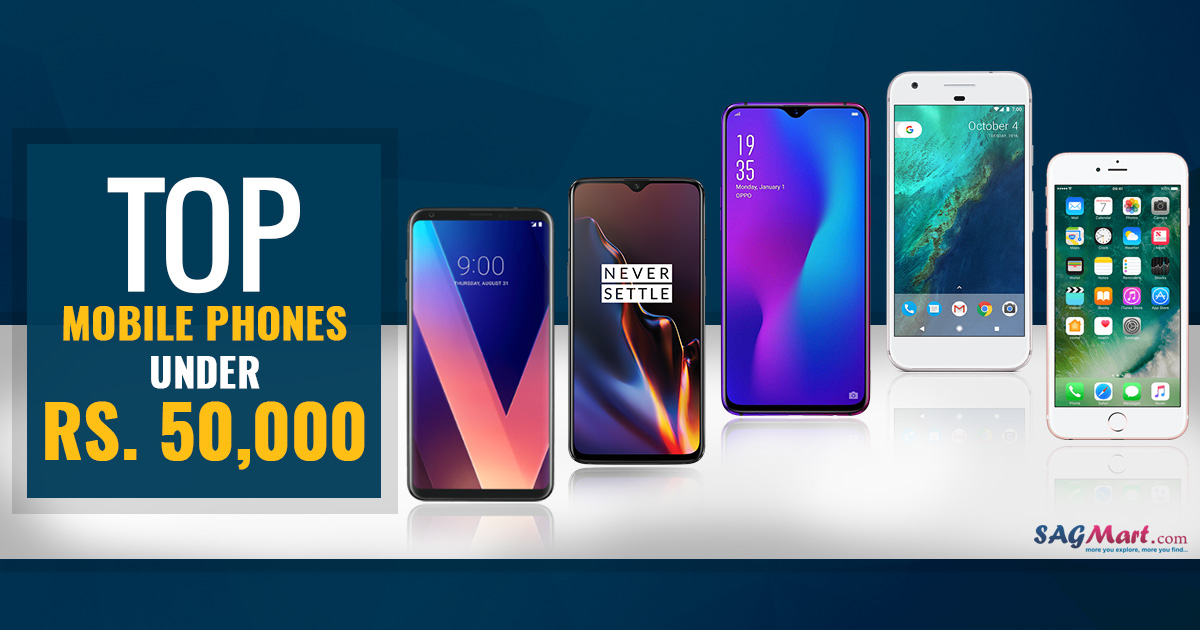
Here we make a list of Smartphone under 50,000 with an approximate price on April 2019. To know the available offers and price of smartphone please click on Flipkart or Amazon links.
| Smartphones | Price (Approx) | Buy Here |
| OnePlus 6T | Rs. 37,999 | Amazon |
| Honor View 20 | Rs. 37,999 | Amazon |
| Oppo R17 Pro | Rs. 39,990 | Flipkart | Amazon |
| Vivo Nex | Rs. 39,990 | Amazon |
| LG V40 ThinQ | Rs. 49,990 | Amazon |
| Google Pixel 2XL | Rs. 42,499 | Flipkart | Amazon |
| Apple iPhone 8 | Rs. 58,999 | Flipkart | Amazon |
| Samsung Galaxy S8 | Rs. 35,999 | Flipkart | Amazon |
| Samsung Galaxy S7 | Rs. 27,999 | Flipkart | Amazon |
| Apple iPhone 7 | Rs. 48,999 | Flipkart | Amazon |
OnePlus 6T
OnePlus 6T is one of the most rating smartphones of the year. The phones come with the 6.4-inch Full HD+ Optic AMOLED display and run on the OxygenOS based Android 9.0 Pie operating system. The OnePlus 6T supports super-fast in-display fingerprint sensor.
OnePlus 6T available into 3 variants:
- 6GB RAM + 128GB storage – Rs 37,999
- 8GB RAM + 128GB storage – Rs 40,999
- 8GB RAM + 128GB storage – Rs 44,999
The device is powered by 2.8GHz Qualcomm Snapdragon 845 octa-core processor and sports a 3700mAh lithium-polymer battery with fast charging technology. The Android phone packs a 16MP + 20MP Dual rear camera with OIS, Super slow motion, Nightscape and Studio Lighting and a 16MP front selfie camera.
Pros
- Super fast in-display fingerprint scanner
- display with tiny teardrop notch
- excellent camera quality
- Longer battery life
Cons
- No headphone jack
- Lacks wireless charging
- Lacks stereo speakers
Honor View 20
Honor View 20 sports a 6.4-inch FHD+ All-View display with the screen resolution of 2310 x 1080 pixels. This is India’s first phone with a ‘Hole-Punch’ display. Its 6GB of RAM and 128GB of storage is availabe at the price of 37,999 and 8GB of RAM and 256GB of storage is available at the price of 45,999.
Honor View 20 is powered by a 2.6GHz Kirin 980 AI Chipset with Dual NPU and a 4000mAh massive battery. The phone packs a 48MP + 3D ToF sensor along with a 25MP front selfie camera. The smartphone has a 4000mAh massive battery with the fast charging technology.
Pros
- Powerful processor
- Trendy design
- Good battery life
- Bundled supercharger
Cons
- Inconsistent face recognition
- No AMOLED display
- No MicroSD card
Oppo R17 Pro
The Oppo R17 Pro comes with a 6.4-inch AMOLED waterdrop notch screen with a waterdrop notch and has an in-display fingerprint sensor. Its 8GB of RAM and 128GB of storage is available on the Amazon at the price of Rs.39,999.
The device is powered with a 2.2GHz Snapdragon 710 octa-core processor and operates on the ColorOS 5.2 based Android v8.1 operating system. The phone packs a 12MP + 20MP rear camera with TOF 3D, Smart Aperture, sensor HDR+RAW HDR, HDR preview, Ultra night mode (handheld supported), optical image stabilization, 7P lens along with a 25MP AI Beauty front Camera.
Pros
- Excellent AMOLED display
- Good camera experience and capable night mode
- Fast charging technology
- Loads of cool ColorOS features
Cons
- No 3.5mm jack
- No water or dust resistance
- No wide angle or telephoto lenses
- No wireless charging
Vivo Nex
The Vivo Nex sports a 6.59-inch ultra FullView super AMOLED display and supports in-display fingerprint sensor. Its 8GB RAM and 128GB storage variant available at the price of Rs.31,935.
The device is powered by a 2.8GHz Qualcomm Snapdragon 845 octa-core processor and runs on the Android v8.1 Oreo operating system. The phone packs a 12MP + 5MP dual rear camera with AI HDR scene recognition, Sony IMX363 sensor which supports 1.4 super large pixels and 4-axis OIS. The Vivo Nex has an 8MP pop-up camera and a 4000mAh battery with the fast charging technology.
Pros
- Quality display & Notch-free
- Pop-up selfie camera
- Excellent performance
- Long lasting battery life
- A lot of value-added features in Funtouch OS
Cons
- Heavy & Fragile
- No ingress protection rating
- No wireless charging
- No expandable storage
LG V40 ThinQ
LG V40 ThinQ smartphone comes with a 6.4-inch P-OLED capacitive touchscreen with the screen resolution of 1440 x 3120 pixels. V40 ThinQ phone price in India starts at Rs. 49,990. The smartphone runs Android Android Oreo v8.1 and is powered by a 3300 mAh, Non-removable Li-ion battery.
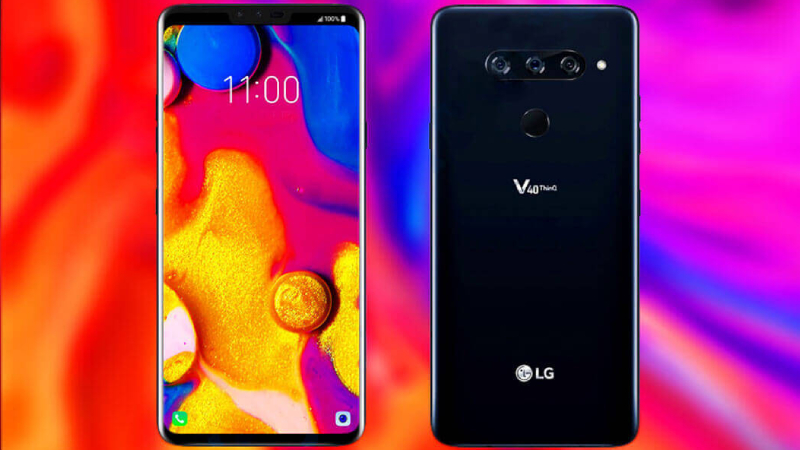
The LG V40 ThinQ is powered by 2.8GHz + 1.7GHz Qualcomm Snapdragon 845 octa-core processor with an Adreno 630 GPU and it comes with 6GB of RAM. The handset packs 128GB of inbuilt storage that can be expanded up to 256GB via a microSD card. The phone packs a 16MP+12MP+12MP Tipple Rear Camera with a triple shot, AI cam, manual mode, super bright camera, dual PDAF, OIS+ and an 8MP+5MP dual front camera.
Pros
- Elegant & ergonomic design
- Snappy performance
- Excellent rear camera performance
- Long lasting battery life
Cons
- No portrait mode
- Selfie camera performance
- Blueshift in display
- Expensive
(Read Also: Samsung A8 Plus vs OnePlus 5T: Which One is Preferred ?)
Google Pixel 2 XL
The Google Pixel 2 XL is powered by 2.35GHz Qualcomm Snapdragon 835 processor and it comes with 4GB of RAM. The smartphone runs Android v8.0.1 operating system and is powered by a Non-removable Li-Ion 3520mAh battery. The handset packs 64/128GB of inbuilt storage that cannot be expanded. The phone packs a 12.2 MP, OIS, phase detection & laser autofocus, dual-LED flash primary camera on the rear and an 8 MP front shooter for selfies.
![]()
Google Pixel 2 XL is a single SIM phone that accepts a Nano-SIM. The Pixel 2 XL phone connectivity options include Wi-Fi 802.11 a/b/g/n/ac, dual-band, Wi-Fi Direct, DLNA, hotspot, GPS (Yes, with A-GPS, GLONASS, BDS, GALILEO), Bluetooth (5.0, A2DP, LE, aptX HD), NFC, USB OTG, 3G and 4G. The smartphone includes Fingerprint (rear-mounted), accelerometer, gyro, proximity, compass, barometer.
Pros
- Stock Android OS
- USB Type-C port with fast charging
- Water resistant display
- Excellent camera performance
- Amazing performance
Cons
- Old design
- No wireless charging
- No MicroSD card option
- No headphone jack
- Single SIM
(Read Also: Top 10 smartphones under Rs. 14,000 in India 2018)
Apple iPhone 8
The Apple iPhone 8 phone was launched in September 2017. The smartphone comes with a 4.7-inch widescreen LCD Multi-Touch display with a screen resolution of 750 x 1334 pixels. Apple iPhone 8 price in India starts at Rs. 58,999.
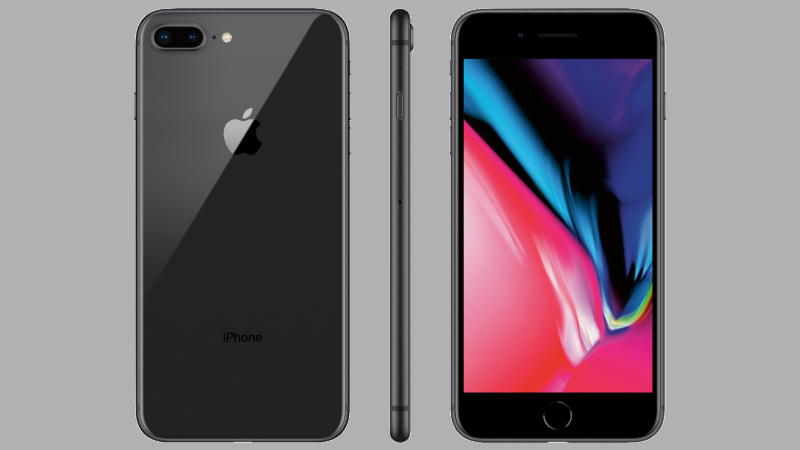
The Apple iPhone 8 runs iOS 12 and is powered by a Non-removable Li-Ion 1822 mAh battery. The smartphone powered by a powerful A11 Bionic Chip [Hexa Core (Dual core, Monsoon + Quad core, Mistral)] and comes with 2GB of RAM. The handset packs 16/32/64/128GB of inbuilt storage that cannot be expanded. The iPhone 8 packs a 12MP primary camera with digital zoom up to 5x, OIS, auto HDR, auto image stabilization and a 7MP front facetime HD camera with retina flash.
Pros
HD display with True Tone
Best performing processor
Excellent camera performance
Cons
- No 3.5mm audio jack
- Lacks wireless charging
- Face ID not present
Samsung Galaxy S8
The Samsung Galaxy S8 comes with a 5.80-inch Super AMOLED capacitive touchscreen display with a resolution of 1440 pixels by 2960 pixels. The handset runs Android 7.0 and is powered by a Non-removable Li-Ion 3000 mAh battery.
The Galaxy S8 is powered by Octa-core (4×2.3 GHz & 4×1.7 GHz) processor and it comes with 4GB of RAM. The smartphone packs 64GB of inbuilt storage that can be expanded up to 256GB via a microSD card. The Galaxy S8 packs a 12 MP, phase detection autofocus, OIS, LED flash primary camera on the rear and an 8 MP, autofocus, 1440p@30fps, dual video call, Auto HDR front shooter for selfies.
Pros
- Fantastic EDGE & display
- Powerful processor
- Stellar camera
Cons
- Poor battery life
- Awkward position of the fingerprint sensor
- Bloatware
Samsung Galaxy S7
The Samsung Galaxy S7 runs Android 6.0 (Marshmallow), upgradable to 7.0 (Nougat) and is powered by a Non-removable Li-Ion 3000 mAh battery. The device is powered by Octa-core (4×2.3 GHz Mongoose & 4×1.6 GHz Cortex-A53) processor and it comes with 4GB of RAM. The handset packs 32/64GB of inbuilt storage that can be expanded up to 256GB via a microSD card. The Galaxy S7 packs a 12 MP, phase detection autofocus, OIS, LED flash primary camera on the rear and a 5 MP, dual video call, Auto HDR front shooter for selfies.
The dual SIM smartphone connectivity options include Wi-Fi 802.11 a/b/g/n/ac, dual-band, Wi-Fi Direct, hotspot, GPS (Yes, with A-GPS, GLONASS, BDS), Bluetooth, NFC, USB OTG, 3G, and 4G. The Galaxy S7 phone includes the compass, fingerprint (front-mounted), gyro, accelerometer, proximity.
Pros
- Water-proof and dust-proof
- Bigger battery life
- Amazing Camera
- Premium build quality
- Wireless charging & Fast charging support
Cons
- Unchanged design
- No USB Type-C
- Non-removable battery
- Slow fingerprint unlocking
Apple iPhone 7
The Apple iPhone 7 phone was launched in September 2016. The smartphone has the fingerprint sensor and comes with the price tag of starts from Rs. 42,999. The handset a 4.70-inch touchscreen display with a resolution of 750 pixels by 1334 pixels. The iPhone 7 is powered by a 2.34 GHz Quad-core processor along with 2GB of RAM and 32/128/256GB internal space capacity but with no expansion support. It packs a 12-megapixel rear camera along with 7-megapixel selfie shutter.
The single SIM mobile runs iOS 10 and is powered by a 1960mAh nonremovable battery. On the connectivity front, it offers 4G, 3G, Bluetooth v4.2, micro USB 2.0, Wi-Fi 802.11 a/b/g/n/ac options. Sensors on the Apple iPhone 7 include Touch ID Fingerprint Sensor, Barometer, Three-axis Gyro Sensor, Accelerometer, Proximity Sensor, Ambient Light Sensor, Backside Illumination Sensor, Digital Compass.
(Read Also: Top 10 Smartphones Under Rs.16000 In 2018)
Pros
- Water resistance display
- Long lasting battery life
- Dual zoom camera
- Faster processor
Cons
- No headphone jack
- Iterative design
- iOS 10
Top 10 Smartphone under Rs. 50,000 in India 2019
http://www.blog.sagmart.com/wp-content/uploads/2018/01/under-50k-mobiles-1-300x300.jpg Mobile and TabletTechnologyThe best smartphone to buy under Rs 50000 in India just happens to be some of the best mobile phones on the market too. At Rs. 50,000, you can today get phones that are almost flagship class. These smartphones offer the best hardware available today along with great cameras and a premium design. That means you’ll be buying premium mobile phones, with little by way of compromise. Here are our picks for the best mobile phones under Rs. 50,000 in India.

Here we make a list of Smartphone under 50,000 with an approximate price on April 2019. To know the available offers and price of smartphone please click on Flipkart or Amazon links.
| Smartphones | Price (Approx) | Buy Here |
| OnePlus 6T | Rs. 37,999 | Amazon |
| Honor View 20 | Rs. 37,999 | Amazon |
| Oppo R17 Pro | Rs. 39,990 | Flipkart | Amazon |
| Vivo Nex | Rs. 39,990 | Amazon |
| LG V40 ThinQ | Rs. 49,990 | Amazon |
| Google Pixel 2XL | Rs. 42,499 | Flipkart | Amazon |
| Apple iPhone 8 | Rs. 58,999 | Flipkart | Amazon |
| Samsung Galaxy S8 | Rs. 35,999 | Flipkart | Amazon |
| Samsung Galaxy S7 | Rs. 27,999 | Flipkart | Amazon |
| Apple iPhone 7 | Rs. 48,999 | Flipkart | Amazon |
OnePlus 6T
OnePlus 6T is one of the most rating smartphones of the year. The phones come with the 6.4-inch Full HD+ Optic AMOLED display and run on the OxygenOS based Android 9.0 Pie operating system. The OnePlus 6T supports super-fast in-display fingerprint sensor.
OnePlus 6T available into 3 variants:
- 6GB RAM + 128GB storage – Rs 37,999
- 8GB RAM + 128GB storage – Rs 40,999
- 8GB RAM + 128GB storage – Rs 44,999
The device is powered by 2.8GHz Qualcomm Snapdragon 845 octa-core processor and sports a 3700mAh lithium-polymer battery with fast charging technology. The Android phone packs a 16MP + 20MP Dual rear camera with OIS, Super slow motion, Nightscape and Studio Lighting and a 16MP front selfie camera.
Pros
- Super fast in-display fingerprint scanner
- display with tiny teardrop notch
- excellent camera quality
- Longer battery life
Cons
- No headphone jack
- Lacks wireless charging
- Lacks stereo speakers
Honor View 20
Honor View 20 sports a 6.4-inch FHD+ All-View display with the screen resolution of 2310 x 1080 pixels. This is India’s first phone with a ‘Hole-Punch’ display. Its 6GB of RAM and 128GB of storage is availabe at the price of 37,999 and 8GB of RAM and 256GB of storage is available at the price of 45,999.
Honor View 20 is powered by a 2.6GHz Kirin 980 AI Chipset with Dual NPU and a 4000mAh massive battery. The phone packs a 48MP + 3D ToF sensor along with a 25MP front selfie camera. The smartphone has a 4000mAh massive battery with the fast charging technology.
Pros
- Powerful processor
- Trendy design
- Good battery life
- Bundled supercharger
Cons
- Inconsistent face recognition
- No AMOLED display
- No MicroSD card
Oppo R17 Pro
The Oppo R17 Pro comes with a 6.4-inch AMOLED waterdrop notch screen with a waterdrop notch and has an in-display fingerprint sensor. Its 8GB of RAM and 128GB of storage is available on the Amazon at the price of Rs.39,999.
The device is powered with a 2.2GHz Snapdragon 710 octa-core processor and operates on the ColorOS 5.2 based Android v8.1 operating system. The phone packs a 12MP + 20MP rear camera with TOF 3D, Smart Aperture, sensor HDR+RAW HDR, HDR preview, Ultra night mode (handheld supported), optical image stabilization, 7P lens along with a 25MP AI Beauty front Camera.
Pros
- Excellent AMOLED display
- Good camera experience and capable night mode
- Fast charging technology
- Loads of cool ColorOS features
Cons
- No 3.5mm jack
- No water or dust resistance
- No wide angle or telephoto lenses
- No wireless charging
Vivo Nex
The Vivo Nex sports a 6.59-inch ultra FullView super AMOLED display and supports in-display fingerprint sensor. Its 8GB RAM and 128GB storage variant available at the price of Rs.31,935.
The device is powered by a 2.8GHz Qualcomm Snapdragon 845 octa-core processor and runs on the Android v8.1 Oreo operating system. The phone packs a 12MP + 5MP dual rear camera with AI HDR scene recognition, Sony IMX363 sensor which supports 1.4 super large pixels and 4-axis OIS. The Vivo Nex has an 8MP pop-up camera and a 4000mAh battery with the fast charging technology.
Pros
- Quality display & Notch-free
- Pop-up selfie camera
- Excellent performance
- Long lasting battery life
- A lot of value-added features in Funtouch OS
Cons
- Heavy & Fragile
- No ingress protection rating
- No wireless charging
- No expandable storage
LG V40 ThinQ
LG V40 ThinQ smartphone comes with a 6.4-inch P-OLED capacitive touchscreen with the screen resolution of 1440 x 3120 pixels. V40 ThinQ phone price in India starts at Rs. 49,990. The smartphone runs Android Android Oreo v8.1 and is powered by a 3300 mAh, Non-removable Li-ion battery.

The LG V40 ThinQ is powered by 2.8GHz + 1.7GHz Qualcomm Snapdragon 845 octa-core processor with an Adreno 630 GPU and it comes with 6GB of RAM. The handset packs 128GB of inbuilt storage that can be expanded up to 256GB via a microSD card. The phone packs a 16MP+12MP+12MP Tipple Rear Camera with a triple shot, AI cam, manual mode, super bright camera, dual PDAF, OIS+ and an 8MP+5MP dual front camera.
Pros
- Elegant & ergonomic design
- Snappy performance
- Excellent rear camera performance
- Long lasting battery life
Cons
- No portrait mode
- Selfie camera performance
- Blueshift in display
- Expensive
(Read Also: Samsung A8 Plus vs OnePlus 5T: Which One is Preferred ?)
Google Pixel 2 XL
The Google Pixel 2 XL is powered by 2.35GHz Qualcomm Snapdragon 835 processor and it comes with 4GB of RAM. The smartphone runs Android v8.0.1 operating system and is powered by a Non-removable Li-Ion 3520mAh battery. The handset packs 64/128GB of inbuilt storage that cannot be expanded. The phone packs a 12.2 MP, OIS, phase detection & laser autofocus, dual-LED flash primary camera on the rear and an 8 MP front shooter for selfies.
![]()
Google Pixel 2 XL is a single SIM phone that accepts a Nano-SIM. The Pixel 2 XL phone connectivity options include Wi-Fi 802.11 a/b/g/n/ac, dual-band, Wi-Fi Direct, DLNA, hotspot, GPS (Yes, with A-GPS, GLONASS, BDS, GALILEO), Bluetooth (5.0, A2DP, LE, aptX HD), NFC, USB OTG, 3G and 4G. The smartphone includes Fingerprint (rear-mounted), accelerometer, gyro, proximity, compass, barometer.
Pros
- Stock Android OS
- USB Type-C port with fast charging
- Water resistant display
- Excellent camera performance
- Amazing performance
Cons
- Old design
- No wireless charging
- No MicroSD card option
- No headphone jack
- Single SIM
(Read Also: Top 10 smartphones under Rs. 14,000 in India 2018)
Apple iPhone 8
The Apple iPhone 8 phone was launched in September 2017. The smartphone comes with a 4.7-inch widescreen LCD Multi-Touch display with a screen resolution of 750 x 1334 pixels. Apple iPhone 8 price in India starts at Rs. 58,999.

The Apple iPhone 8 runs iOS 12 and is powered by a Non-removable Li-Ion 1822 mAh battery. The smartphone powered by a powerful A11 Bionic Chip [Hexa Core (Dual core, Monsoon + Quad core, Mistral)] and comes with 2GB of RAM. The handset packs 16/32/64/128GB of inbuilt storage that cannot be expanded. The iPhone 8 packs a 12MP primary camera with digital zoom up to 5x, OIS, auto HDR, auto image stabilization and a 7MP front facetime HD camera with retina flash.
Pros
HD display with True Tone
Best performing processor
Excellent camera performance
Cons
- No 3.5mm audio jack
- Lacks wireless charging
- Face ID not present
Samsung Galaxy S8
The Samsung Galaxy S8 comes with a 5.80-inch Super AMOLED capacitive touchscreen display with a resolution of 1440 pixels by 2960 pixels. The handset runs Android 7.0 and is powered by a Non-removable Li-Ion 3000 mAh battery.
The Galaxy S8 is powered by Octa-core (4×2.3 GHz & 4×1.7 GHz) processor and it comes with 4GB of RAM. The smartphone packs 64GB of inbuilt storage that can be expanded up to 256GB via a microSD card. The Galaxy S8 packs a 12 MP, phase detection autofocus, OIS, LED flash primary camera on the rear and an 8 MP, autofocus, 1440p@30fps, dual video call, Auto HDR front shooter for selfies.
Pros
- Fantastic EDGE & display
- Powerful processor
- Stellar camera
Cons
- Poor battery life
- Awkward position of the fingerprint sensor
- Bloatware
Samsung Galaxy S7
The Samsung Galaxy S7 runs Android 6.0 (Marshmallow), upgradable to 7.0 (Nougat) and is powered by a Non-removable Li-Ion 3000 mAh battery. The device is powered by Octa-core (4×2.3 GHz Mongoose & 4×1.6 GHz Cortex-A53) processor and it comes with 4GB of RAM. The handset packs 32/64GB of inbuilt storage that can be expanded up to 256GB via a microSD card. The Galaxy S7 packs a 12 MP, phase detection autofocus, OIS, LED flash primary camera on the rear and a 5 MP, dual video call, Auto HDR front shooter for selfies.
The dual SIM smartphone connectivity options include Wi-Fi 802.11 a/b/g/n/ac, dual-band, Wi-Fi Direct, hotspot, GPS (Yes, with A-GPS, GLONASS, BDS), Bluetooth, NFC, USB OTG, 3G, and 4G. The Galaxy S7 phone includes the compass, fingerprint (front-mounted), gyro, accelerometer, proximity.
Pros
- Water-proof and dust-proof
- Bigger battery life
- Amazing Camera
- Premium build quality
- Wireless charging & Fast charging support
Cons
- Unchanged design
- No USB Type-C
- Non-removable battery
- Slow fingerprint unlocking
Apple iPhone 7
The Apple iPhone 7 phone was launched in September 2016. The smartphone has the fingerprint sensor and comes with the price tag of starts from Rs. 42,999. The handset a 4.70-inch touchscreen display with a resolution of 750 pixels by 1334 pixels. The iPhone 7 is powered by a 2.34 GHz Quad-core processor along with 2GB of RAM and 32/128/256GB internal space capacity but with no expansion support. It packs a 12-megapixel rear camera along with 7-megapixel selfie shutter.
The single SIM mobile runs iOS 10 and is powered by a 1960mAh nonremovable battery. On the connectivity front, it offers 4G, 3G, Bluetooth v4.2, micro USB 2.0, Wi-Fi 802.11 a/b/g/n/ac options. Sensors on the Apple iPhone 7 include Touch ID Fingerprint Sensor, Barometer, Three-axis Gyro Sensor, Accelerometer, Proximity Sensor, Ambient Light Sensor, Backside Illumination Sensor, Digital Compass.
(Read Also: Top 10 Smartphones Under Rs.16000 In 2018)
Pros
- Water resistance display
- Long lasting battery life
- Dual zoom camera
- Faster processor
Cons
- No headphone jack
- Iterative design
- iOS 10

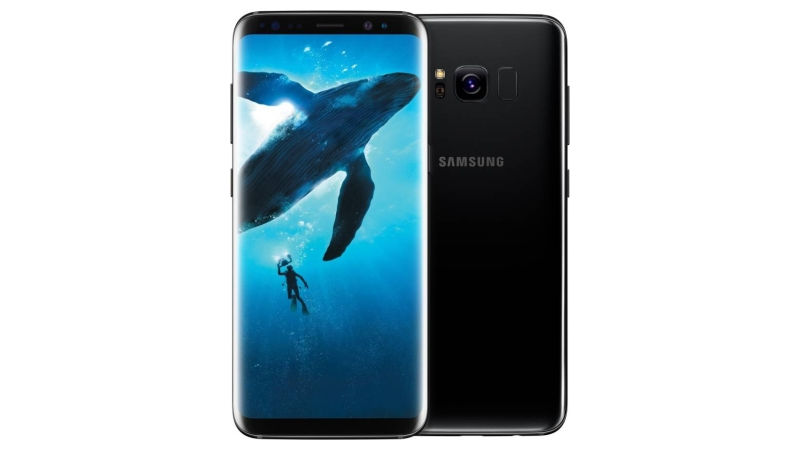
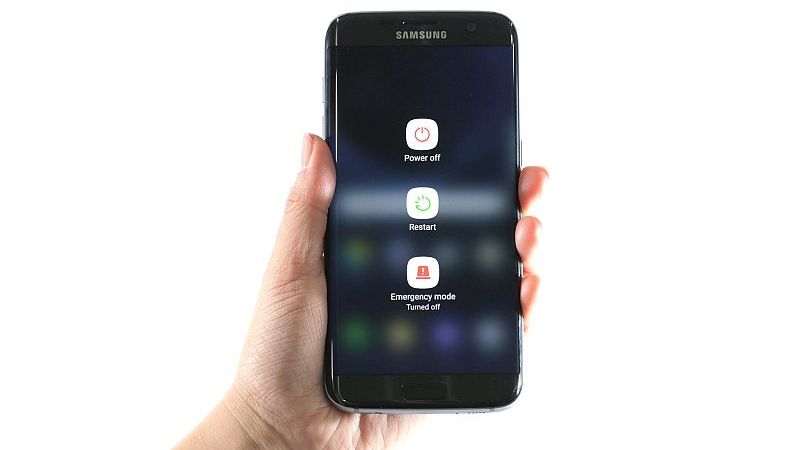
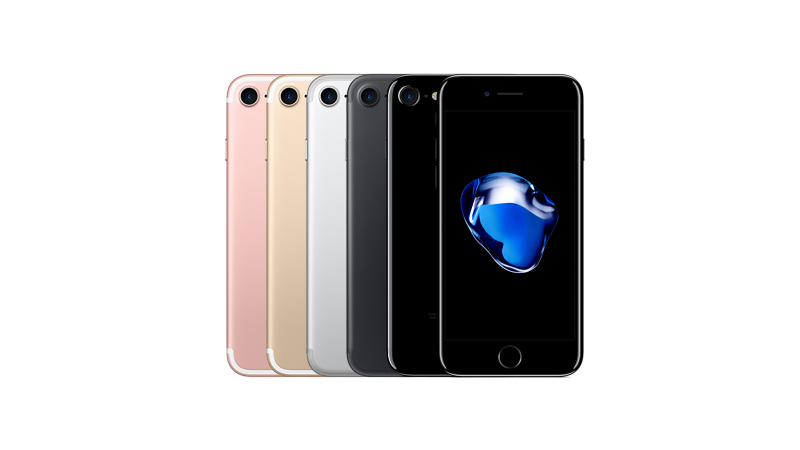
Leave a Reply